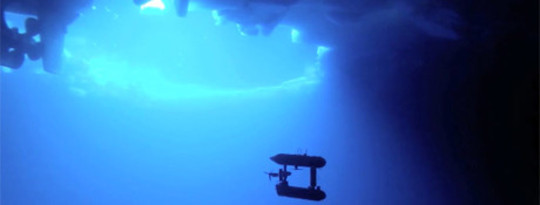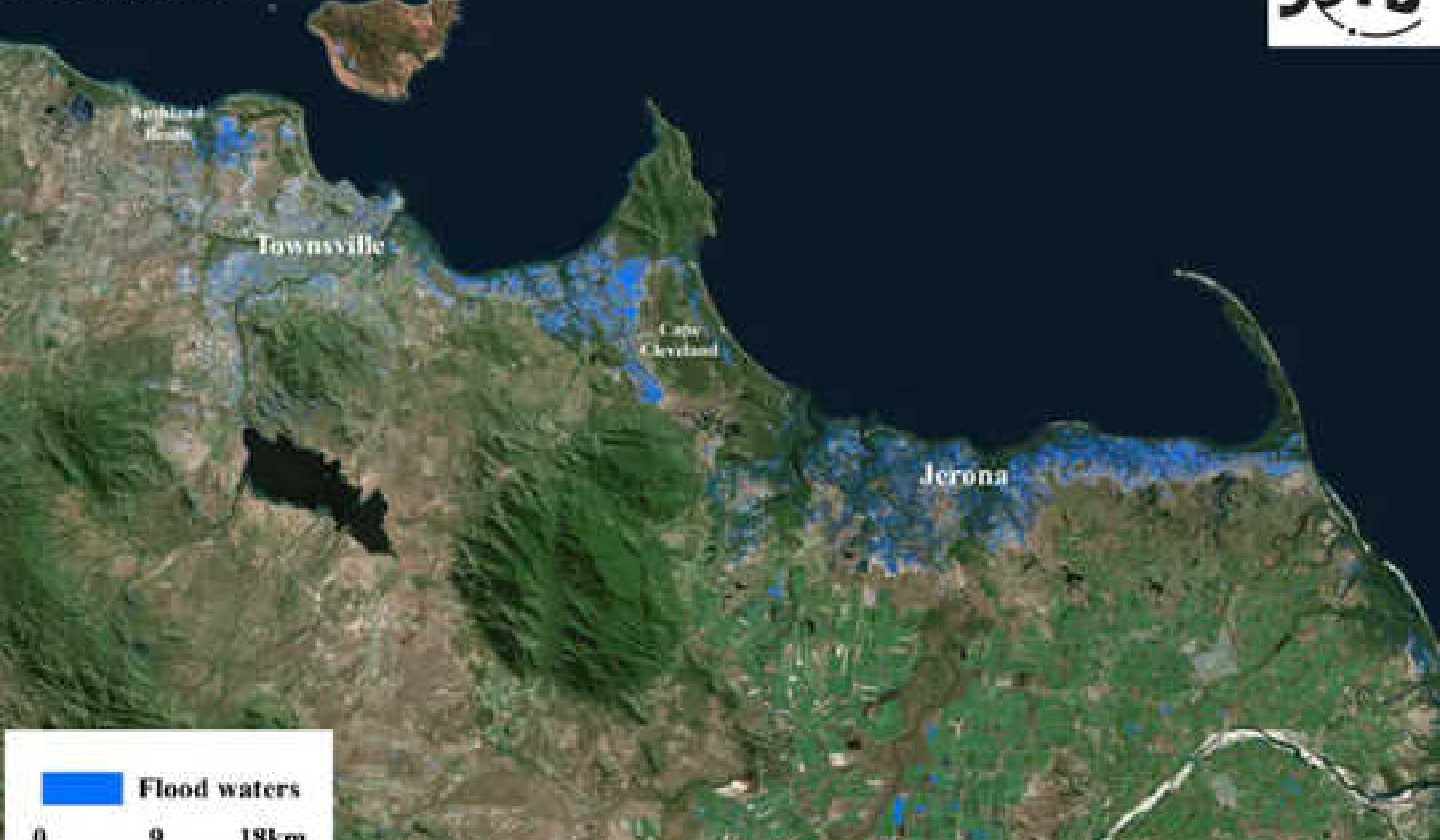
For several years now climatologists have puzzled over an apparent conundrum: why is Antarctic sea ice continuing to expand, albeit at the relatively slow rate of about one to two percent per decade, while Arctic sea ice has been declining rapidly (by some 13% per decade in late summer)?
Just a few weeks ago the Antarctic saw a third consecutive record year of sea ice coverage. The two previous records were set in 2012 and 2013.
To help get to the bottom of this mystery, one team of scientists have enlisted an underwater robot to help measure the thickness of the ice. Their vehicle, known as SeaBED, has an upwards looking sonar which maps the underside of ice floes and provides novel, highly-detailed three-dimensional maps of Antarctic sea ice. The researchers present their findings in the journal Nature Geoscience.
Measuring a total of ten ice floes covering more than 500,000 square metres, they found mean ice thicknesses of 1.4 to 5.5 metres. In some places the ice was up to 16 metres thick. This is much thicker than has been gauged by previous more limited field-based (mainly ship-based) measurements, possibly because ships tend to avoid the areas of thicker sea ice, so there may very well be a sampling selection bias.
Satellites would ideally be able to assess ice thickness over a much wider area. However, although they have had some success in the Arctic, at the other end of the world satellites are severely hampered by our poor knowledge of how much snow there is on top of any given area of Antarctic sea ice.
The researchers report that the ice they measured was in its first year of growth. This is important because it is the multi-year sea ice (ice that survives more than one summer melt season) which is more susceptible to thickness growth through deformation and ridging.
Previous estimates of mean thickness for first-year Antarctic sea-ice – which date back to at least 1986 – suggest it is no more than around a metre thick on average. It has long been recognised however that much thicker multi-year ice floes exist – especially near the coast and the Antarctic Peninsula, where sea-ice ridges can be the size of a house.
Although the new study is important, especially from an innovation/technological point of view, I would like to see this kind of analysis repeated across a range of different areas, and if possible seasons and years. At the end of winter around 20 million square kilometres of sea around the Antarctic is covered by ice – an area larger than Russia. The surveyed zone is tiny in comparison.
Good News
If the results are confirmed by future work, they suggest Antarctic sea-ice may be more resilient towards climate warming than has previously been appreciated.
Also, changes in the sea ice will in turn affect land-based glacial ice and free-floating ice-shelves if the sea-ice suddenly gets removed (or is thicker than realised). This is especially important in regions next to the strongly warming Antarctic Peninsula where some ice shelves have dramatically broken away into the ocean.
However, it will be some time yet before we know answers to the crucial question of what has caused recent sea-ice growth in Antarctica: is it changes in ocean currents, maybe related to an increase in fresher, colder sub-surface meltwaters running off from the great continental ice sheets?
Nevertheless thicker Antarctic sea-ice cover has profound implications. Ice thickness closely controls the exchange of energy between the ocean beneath and the air above – without ice cover, too much heat will leave the oceans and join the atmosphere.
Although ice is a very effective insulator, as soon as it reaches a few tens of centimetres thickness, equally important are holes in the ice cover. These holes, knows as leads and polynyas (leads are long rectilinear channels in the ice, while “polynya” comes from the Russian from “open” and is a larger, lake-like opening) act as natural vents or chimneys, releasing hundreds of watts of heat per square metre into the overlying atmosphere.
 Polynyas near Pine Island Glacier, Antarctica. NASA, CC BY
Polynyas near Pine Island Glacier, Antarctica. NASA, CC BY
Any changes in the distribution of ice thickness can dramatically affect the points where these features form and their persistence. Thus it is fair to say that Antarctic sea ice thickness plays a pivotal role in what we call sea ice-climate feedbacks, where levels of ice cover are strongly linked to ongoing global climate change and vice versa.
It is therefore crucial for scientists modelling sea ice behaviour to have a good knowledge of thickness distribution to feed their models. This study represents a significant step forward.
This article was originally published on The Conversation.
Read the original article.
About the Author
 Edward Hanna is a Professor of Climate Change at University of Sheffield. His research Interests are Polar ice and climate change; Meteorology/climate of Greenland, Iceland and other high-latitude regions; Mass balance of Greenland and Antarctic Ice Sheets; Sea ice and satellite remote sensing of sea ice; Solar forcing of climate; Meteorology during solar eclipses.
Edward Hanna is a Professor of Climate Change at University of Sheffield. His research Interests are Polar ice and climate change; Meteorology/climate of Greenland, Iceland and other high-latitude regions; Mass balance of Greenland and Antarctic Ice Sheets; Sea ice and satellite remote sensing of sea ice; Solar forcing of climate; Meteorology during solar eclipses.
Disclosure Statement: Edward Hanna does not work for, consult to, own shares in or receive funding from any company or organisation that would benefit from this article, and has no relevant affiliations.
Robot Sub Reveals Antarctic Sea Ice Thicker Than Thought
Research published in Nature Geoscience based on 3D ice maps from robot submarine data shows Antarctic sea ice is up to 1m thicker than had been assumed. Don't forget to SUBSCRIBE! if you like climate relate videos. Full story here: http://www.reportingclimatescience.com... (This video courtesy: British Antarctic Survey)
{youtube}https://www.youtube.com/watch?v=06PQg-JXmP8{/youtube}
Recommended book:
The World Is Blue: How Our Fate and the Ocean's Are One
by Sylvia Earle.
 This book tie-in to National Geographic's ambitious 5-year ocean initiative—focusing on overfishing—is written in National Geographic Explorer-in-Residence Sylvia Earle's accessible yet hard-hitting voice. Through compelling personal stories she puts the current and future peril of the ocean and the life it supports in perspective for a wide public audience.
This book tie-in to National Geographic's ambitious 5-year ocean initiative—focusing on overfishing—is written in National Geographic Explorer-in-Residence Sylvia Earle's accessible yet hard-hitting voice. Through compelling personal stories she puts the current and future peril of the ocean and the life it supports in perspective for a wide public audience.
Click here for more info and/or to order this book on Amazon.
























